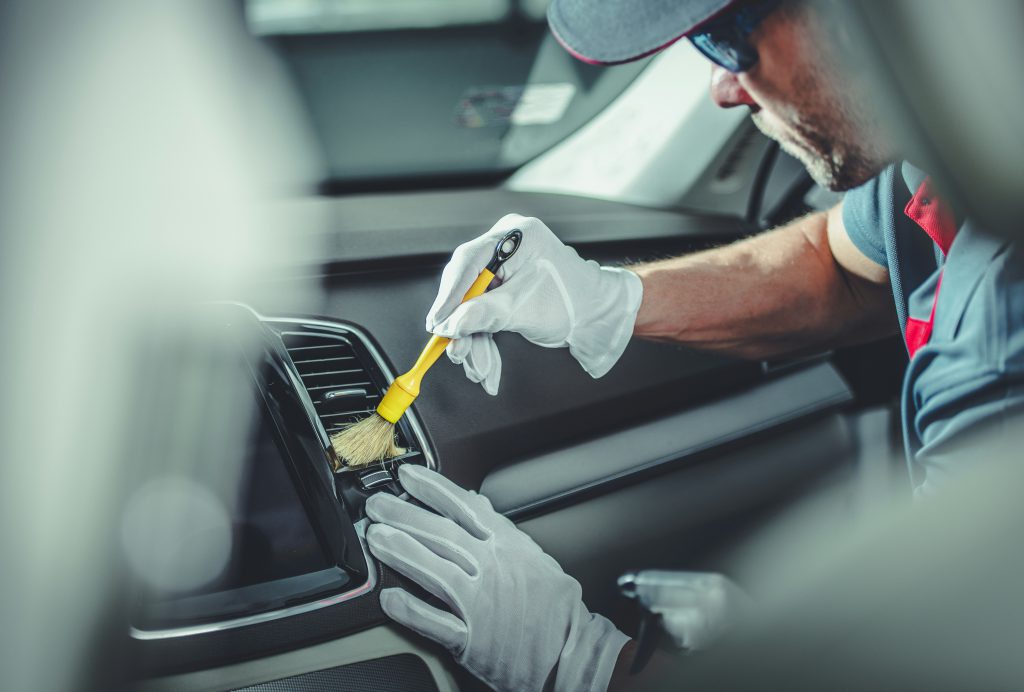Looking to upgrade your driving experience? This article covers must-have car accessories that offer safety, convenience, and comfort. Discover the essential items that every driver should own to make every journey better.

Keeping up with your car’s oil is a great way to help preserve its longevity. We give you some tips on how to maximize your oil life.

Ever wondered “how often should you change your oil?” You’re not alone! Oil changes are essential for maintaining your vehicle’s performance and longevity. In this comprehensive guide, we’ll walk you through everything you need to know, from understanding “how often should you change your oil” intervals to DIY oil change tips and extending oil life. So buckle up and let’s get started!
Understand oil change intervals and consult your manual for manufacturer’s recommendations.
Driving conditions, vehicle age/type, type of motor oil all factor into optimal engine performance.
Regular maintenance & inspecting the oil pan are essential to extending the life of your car.
Knowing when to change your oil depends on several factors, such as the manufacturer’s recommendations, driving conditions, and your vehicle’s age and type. By understanding these factors, you can make informed decisions and maintain the optimal performance of your engine.
Let’s dive deeper into these factors.
Your owner’s manual is the go-to source for determining the right oil change intervals for your vehicle. Following the manufacturer’s guidelines as stated in the owner’s manual is crucial for keeping your engine running smoothly and ensuring your vehicle lasts longer. Before heading to the auto parts store, make sure to check your owner’s manual to know the type and amount of oil your vehicle needs. For example, a 2012 Ford Explorer requires 5.7 quarts of oil and a 2.0-liter Ford EcoBoost engine needs 5W-30 viscosity oil.
Sticking to the manufacturer’s recommendations not only helps maintain your oil filter gasket but also prevents potential engine damage. So always consult your owner’s manual for the best advice on oil change intervals.
Driving conditions play a significant role in determining oil change intervals. Short trips, stop-and-go driving, extreme temperatures, towing heavy loads, and high speeds can all affect how often you need an oil change. These tough conditions can cause the oil to break down faster, requiring more frequent oil changes.
For instance, driving in rush hour traffic, taking several short trips (around 5 to 10 miles), and driving in extremely hot or cold weather are considered tough driving conditions. In such situations, it’s wise to keep a closer eye on your oil and change it more frequently to ensure your engine’s optimal performance.
Different vehicles require different oil change intervals based on factors like engine design, running conditions, and age. The type of engine, fuel, and oil, as well as the age and wear of the engine, all affect how often you need to change your oil.
For instance, newer cars often benefit from using synthetic oil, while conventional oil might be a better choice for older vehicles. Driving habits, such as the type of roads you drive on, the frequency of short trips, and long trips, can also impact oil change intervals.
By considering your vehicle’s age and type, you can make better decisions about the right oil and change intervals for your specific needs.
Motor oil comes in two main types: synthetic and conventional. Each type has its advantages and disadvantages, which can impact oil change frequency.
Let’s explore the differences between these two types of motor oil and how they affect your vehicle’s performance.
Synthetic oil is a man-made lubricant made up of artificially created chemical compounds, providing better performance and longer-lasting protection for your engine. It’s created from chemically altered compounds and top-notch base oils, such as Pennzoil Platinum® Full Synthetic motor oil with PurePlus® Technology. Synthetic oils can handle more heat, perform better in extreme temperatures, and even improve gas mileage compared to conventional oils.
However, synthetic oil is generally more expensive than conventional oil, so it’s essential to weigh the benefits against the cost. If you have a newer car or drive in demanding conditions, synthetic oil might be the best choice for your vehicle.
Conventional oil, also known as mineral oil, is made from refined crude oil. It’s a cheaper option compared to synthetic oil but still does the job of lubricating engines just fine. Conventional oil is less high-maintenance and works better for older cars or less demanding driving conditions.
While it may not provide the same level of performance and protection as synthetic oil, conventional oil is an excellent choice for those with older vehicles or less intense driving habits. It’s essential to consider your driving conditions and vehicle age when choosing between synthetic and conventional oil.
How do you know when it’s time for an oil change? There are some telltale signs, such as checking the oil level and evaluating its color and consistency.
Let’s discuss these indicators in detail so you can be proactive in maintaining your vehicle’s engine health.
To check the oil level in your vehicle, use the oil dipstick. First, wait a few minutes for the oil to settle, then take out the dipstick, wipe it off, put it back in, and take it out again to check the oil level. The oil should be filled near the “full” line, but not beyond it. It should never drop below the “add” line. If the oil level isn’t between these lines, add oil and check again until it is. Don’t forget to put the dipstick back in when you’re done.
Regularly checking your oil level is crucial for maintaining proper oil levels and ensuring your engine runs smoothly. It’s a simple yet effective way to monitor your vehicle’s health and avoid potential damage due to low oil levels.
To evaluate the color and consistency of your oil, you can look at the oil on the dipstick. Ideally, the oil should be a slightly see-through amber color and smooth and fluid. If the oil appears dark, thick, or contaminated, it might be time for an oil change.
Checking the oil color and consistency regularly can help you identify potential issues before they cause damage to your engine. If you notice any signs of oil breakdown or contamination, it’s best to schedule an oil change to maintain your vehicle’s performance and protect your engine.
Performing an oil change yourself can save you money and give you a sense of accomplishment. In this section, we’ll provide tips on how to change your oil, including gathering necessary supplies and following a step-by-step process.
Let’s get started!
Before you begin your DIY oil change, make sure you have all the essential supplies. You’ll need oil, an oil filter, and an oil-filter removal wrench. You will also need a wrench to take out the drain plug, a funnel, a drain pan, and some gloves. You can find these items at your local auto parts store or dealership. Remember to consult your owner’s manual for the correct type and amount of oil needed for your vehicle.
Having the right supplies on hand will ensure a smooth and efficient oil change process. With everything in place, you’re ready to tackle the oil change and keep your vehicle running at its best.
Now that you have all the necessary supplies, it’s time to begin the oil change process. First, safely raise your vehicle using a floor jack and secure it with jack stands. Make sure you’re on level ground and engage the parking brake for added safety.
Next, place an oil drain pan beneath the oil drain plug and use a wrench to remove it. Allow the oil to drain into the pan, waiting about five minutes or until the flow slows down to a drip. Once the oil is drained, remove the old oil filter using an oil filter wrench and install the new oil filter, ensuring the gasket touches the mounting plate gasket surface and tightening it according to the directions. Replace the oil drain plug and tighten it without over-tightening.
Finally, use a funnel to add the recommended amount of oil to your engine. Check the oil level using the dipstick to ensure it’s within the proper range. After completing the oil change, be sure to dispose of the used oil and filter properly, as most auto parts stores and oil change centers will recycle them for free.
To get the most out of your own oil and keep your vehicle running smoothly, it’s essential to practice good maintenance habits, such as checking the oil cap, using oil filters, and considering oil additives. Additionally, don’t forget to inspect your oil pan and oil plug for any signs of damage or leaks.
In this section, we’ll discuss strategies for extending oil life and maintaining your vehicle.
Regular maintenance is key to keeping your vehicle in top condition and extending the life of your oil. This includes tasks such as checking fluid levels, inspecting belts and hoses, changing the oil, and replacing air filters. By performing regular maintenance, you can prevent accidents, ensure your vehicle runs well, and make it last longer.
Establishing a routine maintenance schedule based on your vehicle’s age, driving habits, and manufacturer’s recommendations will help you stay on top of your vehicle’s health and extend the life of your oil.
Oil additives can provide additional benefits to your engine and help extend the life of your oil. They work by reducing the breakdown of chemicals in the oil, reducing friction, heat, wear and tear, and even slowing or stopping oil leaks. Some common oil additives include detergents, anti-wear additives, friction modifiers, antioxidants, corrosion inhibitors, and viscosity index improvers.
By incorporating oil additives into your maintenance routine, you can improve your vehicle’s performance, protect your engine, and extend the life of your oil. Always consult your owner’s manual for the right oil additives for your specific vehicle.
In conclusion, understanding when and how to change your oil is crucial for maintaining your vehicle’s performance and longevity. By paying attention to manufacturer’s recommendations, driving conditions, and your vehicle’s age and type, you can make informed decisions about oil change intervals. Additionally, practicing regular maintenance and considering oil additives can further extend the life of your oil and keep your engine running smoothly. Take charge of your vehicle’s health and enjoy the open road with confidence!
For optimal engine health, it’s recommended to change your oil every 7,500 to 10,000 miles. With modern automotive technology and better oil formulations, you can now go much longer than the 3,000 miles of the past before needing an oil change.
Regular oil changes are still important, however, as they help keep your engine running smoothly and efficiently. They also help to prevent build-up of dirt and debris, which can cause damage to the building.
Changing your oil involves raising the vehicle, positioning a catch pan and removing the plug, inspecting the vehicle while all the oil drains, reinstalling the drain plug and torquing it, removing the old oil filter, cleaning the mount and removing the old O-ring, lubing the new filter and attaching it by hand, and finally removing the oil fill cap and adding new oil.
Adding new oil is the final step in the process. It is important to use the correct type and amount of oil for your vehicle. Make sure to check your owner’s manual for the correct oil type and amount. Additionally, it is important to check the oil level regularly to ensure that it is at the correct level.
Synthetic oil offers superior performance and protection compared to conventional oil, making it the better choice for newer vehicles or more demanding driving conditions.
You’ll need oil, a filter, wrenches, a funnel, a pan, and gloves for an easy DIY oil change.

Looking to upgrade your driving experience? This article covers must-have car accessories that offer safety, convenience, and comfort. Discover the essential items that every driver should own to make every journey better.

Is it time for a tire change? Discover the critical indicators for tire replacement, choose the right tires for your vehicle, and navigate the tire change procedure with ease. This article prepares you for a hassle-free tire swap, focusing solely on what you need to know.

Looking for a straightforward guide to interior car cleaning? This article cuts through the noise to deliver practical tips and essential tools that will transform the look and feel of your car’s interior. From selecting the most effective microfiber towels to understanding the power of a quality vacuum and the versatility of all-purpose cleaners, we’ve got you covered. Dive in to discover how to make your car’s interior pristine with ease.

Choosing the right windshield wiper is vital for your driving visibility and safety. Our guide provides practical advice on finding the best fit, maintaining your wipers, and recognizing when it’s time for a replacement. Dive in for clear-cut answers to keep your view unobstructed, no matter the weather.

By understanding the consequences of weather damage in cars and taking necessary precautions, you can safeguard your investment and ensure your car remains in tip-top condition.

A well-maintained car is a safe, efficient, and reliable machine. But what key maintenance tasks are essential to keep your vehicle running smoothly for years to come? In this blog post, we will explore the importance of regular car maintenance, covering everything from engine oil checks to advanced care for longevity. So, get ready to learn how to keep your vehicle in tip-top shape and prevent costly repairs down the road.
